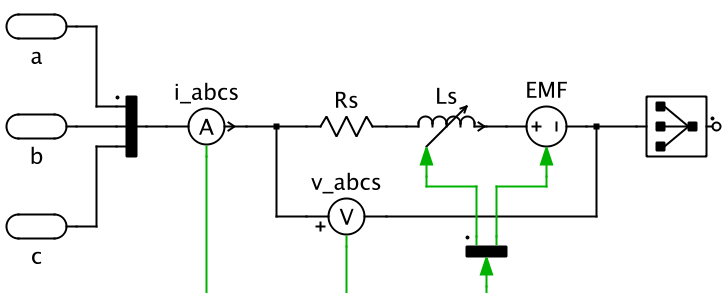Versatile Models Adaptable to Non-Standard Machine Designs

Power converters are used increasingly to power electric machines in applications ranging from industrial to automotive. The PLECS component library includes a multitude of DC and AC machines to rapidly model complete motor drive systems.
- DC Machines
- AC Induction Machines
- AC Synchronous Machines
- Permanent Magnet Machines
- Switched Reluctance Machines
For non-standard electrical machines users can create their own models. Rather than developing new models from scratch, existing library models can be modified to meet specific requirements.
Non-Linear Models

Most electric machines are designed to operate at or near the magnetic saturation point to maximize power density. To properly simulate such machines the models must incorporate magnetic saturation curves. PLECS provides advanced non-linear motor models with flexibility in configuring the saturation properties. The PLECS solvers can efficiently handle these non-linearities.
Voltage Behind Reactance Models

Investigating failure modes and developing mitigation strategies is an important objective of simulating electric drive systems. A potentially dangerous condition for a PM drive is tripping during flux-weakening operation, resulting in uncontrolled currents and torque.
PLECS provides machine models suited for such failure mode analyses. They are implemented as individual stator windings consisting of controlled voltage sources behind variable reactances (VBR). Unlike traditional rotor reference frame models, VBR formulations allow direct interfacing to arbitrary external networks, including open-circuited machine terminals.
